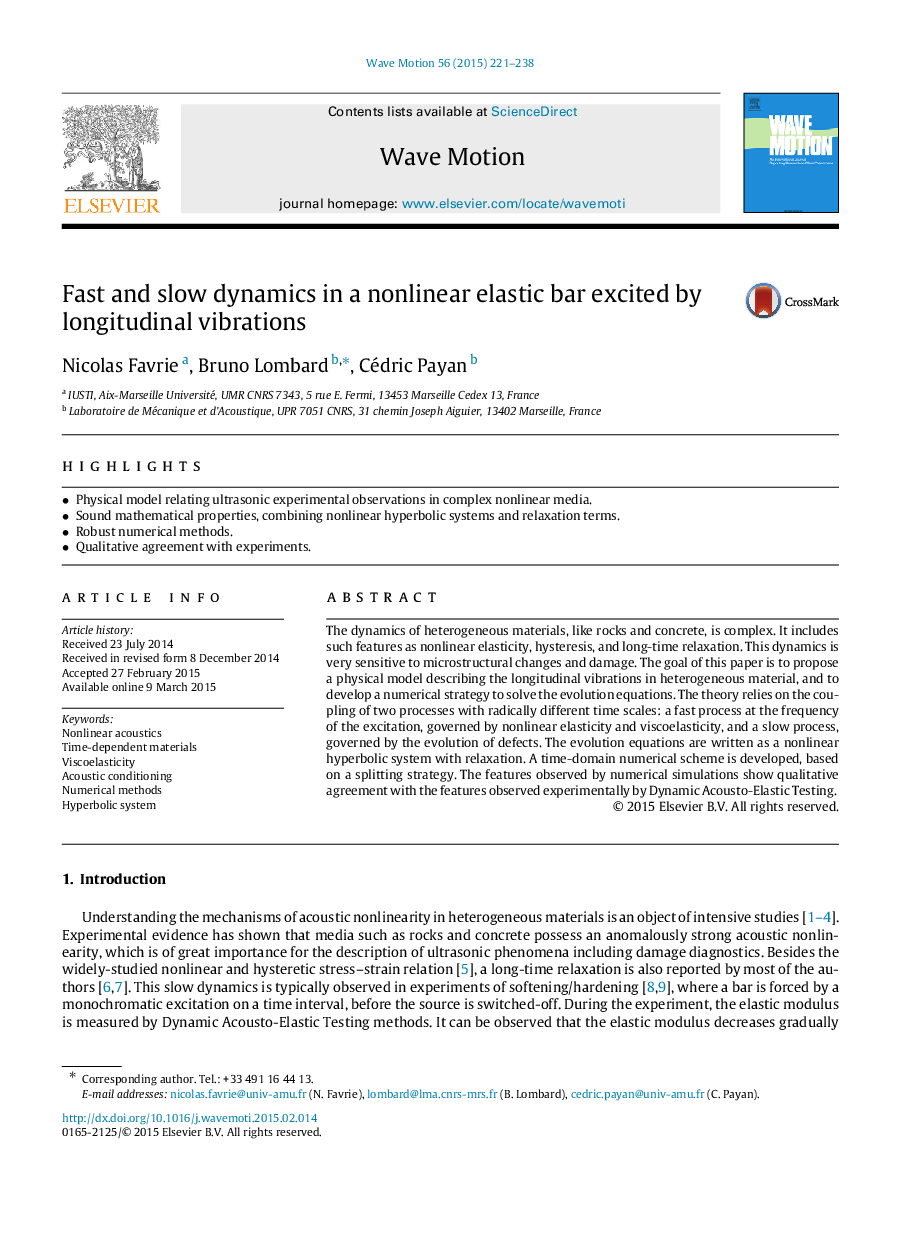| Article ID | Journal | Published Year | Pages | File Type |
|---|---|---|---|---|
| 1901260 | Wave Motion | 2015 | 18 Pages |
•Physical model relating ultrasonic experimental observations in complex nonlinear media.•Sound mathematical properties, combining nonlinear hyperbolic systems and relaxation terms.•Robust numerical methods.•Qualitative agreement with experiments.
The dynamics of heterogeneous materials, like rocks and concrete, is complex. It includes such features as nonlinear elasticity, hysteresis, and long-time relaxation. This dynamics is very sensitive to microstructural changes and damage. The goal of this paper is to propose a physical model describing the longitudinal vibrations in heterogeneous material, and to develop a numerical strategy to solve the evolution equations. The theory relies on the coupling of two processes with radically different time scales: a fast process at the frequency of the excitation, governed by nonlinear elasticity and viscoelasticity, and a slow process, governed by the evolution of defects. The evolution equations are written as a nonlinear hyperbolic system with relaxation. A time-domain numerical scheme is developed, based on a splitting strategy. The features observed by numerical simulations show qualitative agreement with the features observed experimentally by Dynamic Acousto-Elastic Testing.
